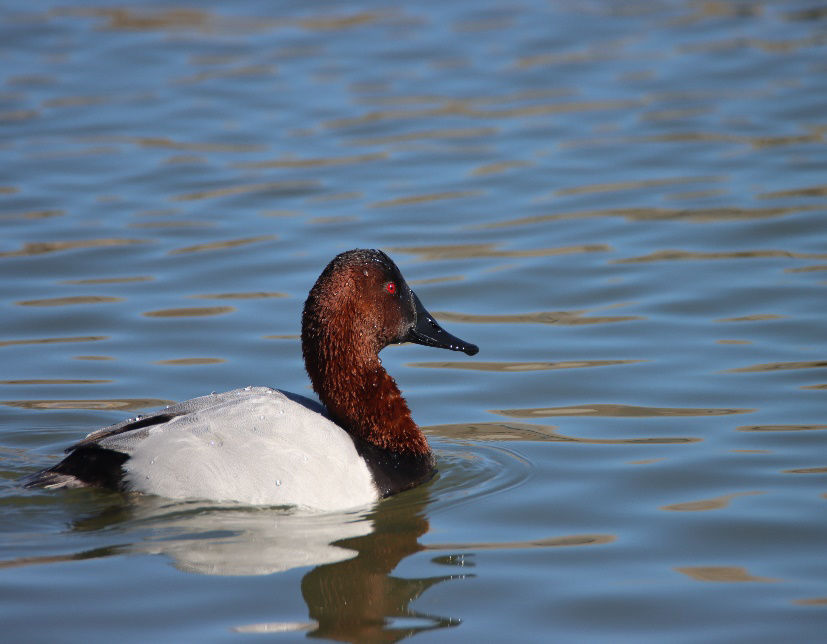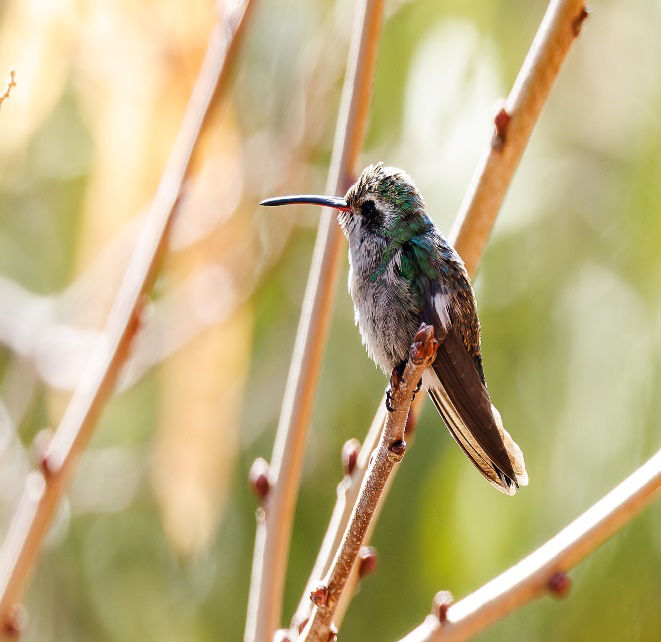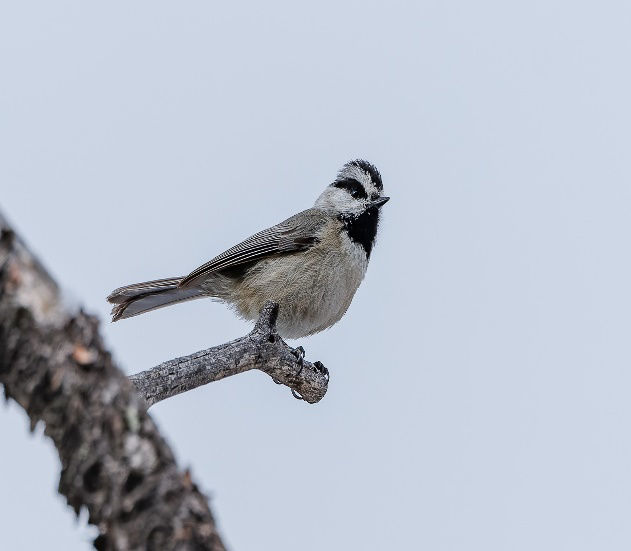Departure Date: January 9 - 15, 2025
Compiled By: Kevin Burke
Trip Leaders: Kevin Burke
Toll Free: 800.328.8368
Phone: 512.328.5221
Winter New Mexico 1/9/2025-1/15/2025

The appeal of the Winter New Mexico trip is the diversity of habitats that we visit. Deserts, riparian areas, lakes, rivers, montane forest, and sub-alpine zones are all on the birding menu. This year’s trip was chillier than others. We started off in El Paso with snow flurries. The birds were handling it just fine, but the people who live in El Paso looked miserable! The snow didn’t last, and we meandered our way north into New Mexico. The high temperature for the trip was forty-two degrees, and the low was eight. That being said, we had a wonderful time and saw a huge diversity of species.
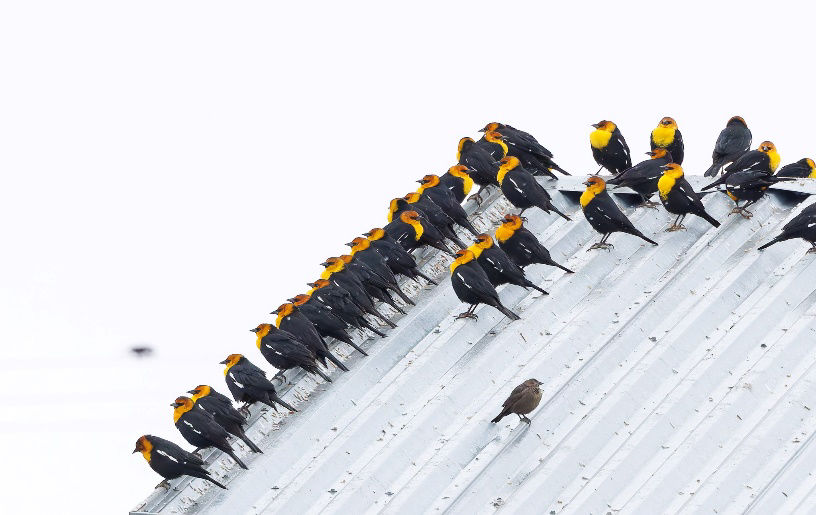
Yellow-headed Blackbirds © Ross McKinney
I like this trip because we get to bird a little before our first dinner. El Paso generally has very pleasant weather in the winter and great birding. We started out with our group going to Ascarate Park, a multi-use park in the city with baseball fields, a golf course, and a large lake. The lake was our focus to observe the wintering waterfowl. Mexican Duck is a big target here, and we were able to see several shortly after arriving. Northern Shovelers, Ruddy Duck, and Lesser Scaup are all here in abundance. Neotropic Cormorant is usually a highlight for tour participants as well. The highlight of the afternoon is a drive north to Sunland Racetrack. The stables here host a huge wintering flock of Yellow-headed Blackbirds; we counted 3,500 birds in total. It was quite a spectacle! In total we had five species of blackbirds at the site, but the ones with yellow heads stole the show. We ended up in downtown El Paso for a nice dinner.
The next morning we went back to Ascarate Park to search for some non-waterfowl that inhabit the park. Burrowing Owls were high on the list. We were able to see six in total sunning themselves outside their manmade burrows. It was quite a treat. Another excellent find for the park was a Prairie Falcon that was wintering in the park. It allowed us some really close views while it sat on a light post. We had a couple more stops in El Paso before making our way to Las Cruces for the evening. A tour tradition of stopping at Barry Zimmer’s yard yielded great looks at a locally rare Broad-billed Hummingbird. Thanks Barry! The last stop in Texas was at a local birder’s house to view the mega rare Berylline Hummingbird. I believe it was the third state record for Texas, and it showed up as soon as we got there. How often does that happen? Riding this high, we rode towards Las Cruces and ended the day with great views of Ferruginous Hawk just outside of town. A stellar first full day!
A full day around Las Cruces was in store for today. We stopped at a large stretch of undisturbed sagebrush on the way to Organ Mountains National Monument. Our target here was the declining Sagebrush Sparrow. We typically see a good variety of sparrows in this spot, but with weather being in the low twenties, it was a little slow. Luckily, a few Sagebrush Sparrows sat up quite nicely for us. Beautiful Black-throated Sparrows also showed well. We traveled to Organ Mountains National Monument. The road into Aguirre Springs is always awesome. We had Loggerhead Shrike, Rock Wren, and killer views of Crissal Thrasher. Switching gears for the afternoon, we headed west of town to the Rio Grande River at Calle del Norte and Mesilla Valley Bosque State Park. Our highlights from both were Marsh Wren, Black-crowned Night Heron, Red-naped Sapsucker, and killer views of Wilson’s Snipe. Another good day in the books!

Red-naped Sapsucker © Ross McKinney
We were headed to Truth or Consequences at the end of today and enjoyed some great birding on the way. We stopped at Organ Mountains National Monument again and had stellar views of Rufous-crowned Sparrow and Canyon Towhee. We wound our way on back roads out of Las Cruces north through the town of Hatch. We began to see our first Sandhill Cranes of the trip. It was a sign of good things to come. Percha Dam State Park is a fixture for the tour. This park was born out of the dam across the Rio Grande. Farmers irrigate their fields, growing a wide variety of crops including pistachios and the famous Hatch chilis. Here we had the best look at Prairie Falcon that I have probably ever had. It sat in a tree just off the trail we were walking along and let us walk right underneath it. Awesome! A quick stop at Las Animas Creek for the charismatic Acorn Woodpeckers, and we were off to Elephant Butte. Here we ended the day watching hundreds of Western Grebes, Common Mergansers, and even a few Clark’s Grebes fishing in Elephant Butte Reservoir.
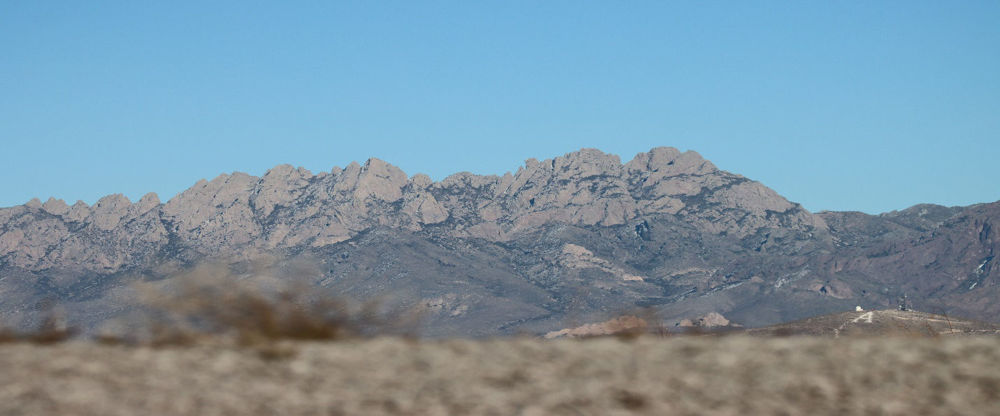
Organ Mountains © Kevin Burke
Truth or Consequences is an awesome name for a town. The town was originally named Hot Springs, but a radio contest to see if a town would change their name to the title of the radio show was too tempting for the residents to pass up. A quick stop at the north end of Elephant Butte Reservoir yielded more excellent views of Crissal Thrasher and Mountain Bluebirds. We were really excited to see these beautiful sky-blue birds. On our way up to Socorro and Bosque del Apache we found a Golden Eagle on a frontage road. The bird was a little flighty, but at least we got to see it. The rest of the morning was spent in Water Canyon in the Cibola National Forest. We get birds here that we don’t get anywhere else on the trip. Steller’s Jay, Mountain Chickadee, and Juniper Titmouse were among the highlights. The roads were a little snow-covered, so we didn’t venture far up the mountains, but it was beautiful and productive nonetheless.
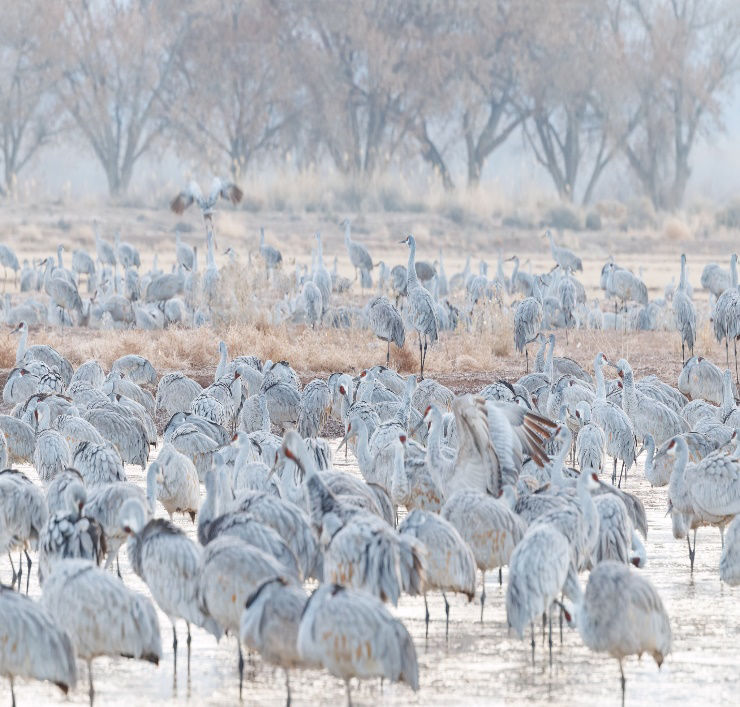
Sandhill Cranes © Ross McKinney
The rest of the day was spent at Bosque del Apache. This is most likely why people sign up for the trip. The spectacle of birds here is amazing. We were immediately greeted by 1,500 Snow Geese. A lone Coyote had just killed a Snow Goose and fetched it out of the water right in front of us. Ross’s Geese were also present in the large group of geese. Raptors abound here too. Ferruginous Hawk, Merlin, Northern Harrier, American Kestrel, Bald Eagle, and Red-tailed Hawk all patrolled the skies. I wouldn’t want to be a rodent there! We completed the seven-mile north loop having seen a lot of cool wildlife. Sparrows were another highlight, with seven species being observed including Lincoln’s, Vesper, and Brewer’s. What an awesome way to spend the afternoon. We headed up for a night in Socorro.
We rose early this morning to head to the Bernardo Wildlife Management Area. Every year thousands of Sandhill Cranes spend the winter between Bernardo and Bosque del Apache. This year they just happened to be at Bernardo. The dawn flight is something to behold. The entry to Bernardo is right where all the cranes were roosting. We counted 12,500 in total. The cranes roost in the ponds for the night and fly off to the farm fields during the day to feed. Watching the cranes fly out is a highlight of the trip for sure. Along with the cranes, thousands of Snow Geese and hundreds of Ross’s Geese congregate here, too. It was a cold morning but well worth seeing this great spectacle. When the show was over we headed north to Albuquerque along the Rio Grande once again. We stopped at a park on the river and were lucky enough to find a Cackling Goose and a Harris’s Sparrow.
The rest of the day was spent driving up to another huge highlight of the trip. Sandia Crest is just outside of Albuquerque and at an elevation of 10,800 feet. It was eight degrees at the top! Brrrr! The drive was well worth it, because we got to observe all three rosy-finch species. There are a couple of feeders set out at the trailhead at the top, and the birds whisk in and out all day. We waited patiently, and after a few minutes the flock came in and devoured seeds for a few minutes, and off they went. This may be one of the only places to see all three species in one spot. What a treat! On the way back down for our final night, a nice flock of Evening Grosbeaks flew over. We spent our final night in Albuquerque and traveled home the following day.
This trip is so much fun. We tallied 138 species in all. A great haul for five full days of birding. The desert, the mountains, the Rio Grande, and the people make this a great trip. Watching the eyes of participants when thousands of Sandhill Cranes or Snow Geese take flight is a true joy. Showing people their lifer rosy-finches is so rewarding, even if it was eight degrees. Let’s hope that next year’s trip is a little warmer!
Read the description for the next departure of this tour.
View Kevin Burke's upcoming tour schedule.
ITINERARY
Day 1 January 9 - Sunland Park/Evening get-acquainted dinner in El Paso
Day 2 January 10 - Ascarate Park/Barry Zimmer’s Yard/Sagecrest Park, NM
Day 3 January 11 – Organ Mountains National Monument/Calle De Norte/Mesilla Valley Bosque SP
Day 4 January 12– Soledad Canyon/Percha Dam SP/Las Animas Creek/Elephant Butte SP
Day 5 January 13 –Elephant Butte SP/Lower Water Canyon/Bosque del Apache NWR
Day 6 January 14 – Bernardo WMA/ABQ Bio Park Tingley Lagoon/Sandia Crest
Day 7 January 15 – Departure
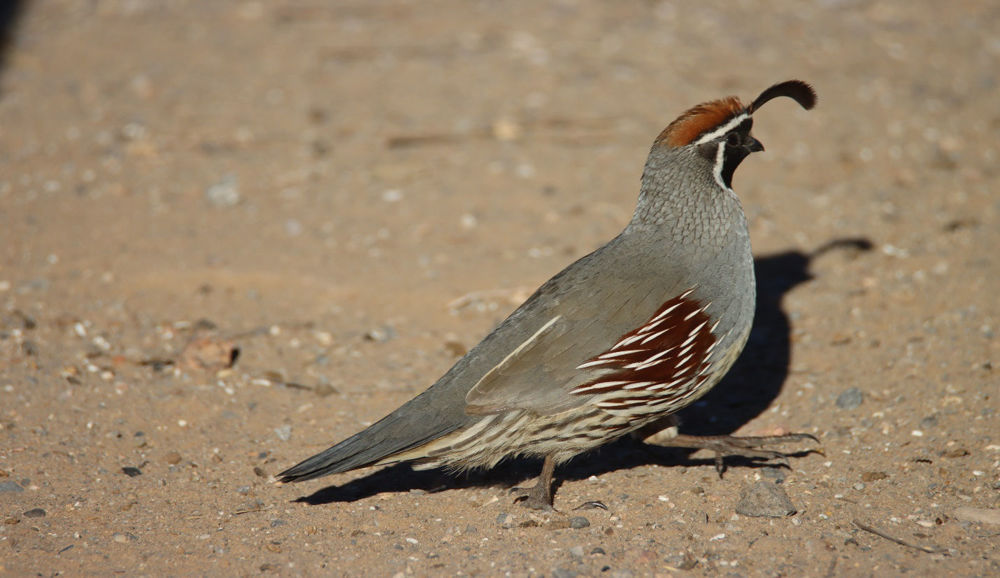
Gambel's Quail © Kevin Burke

